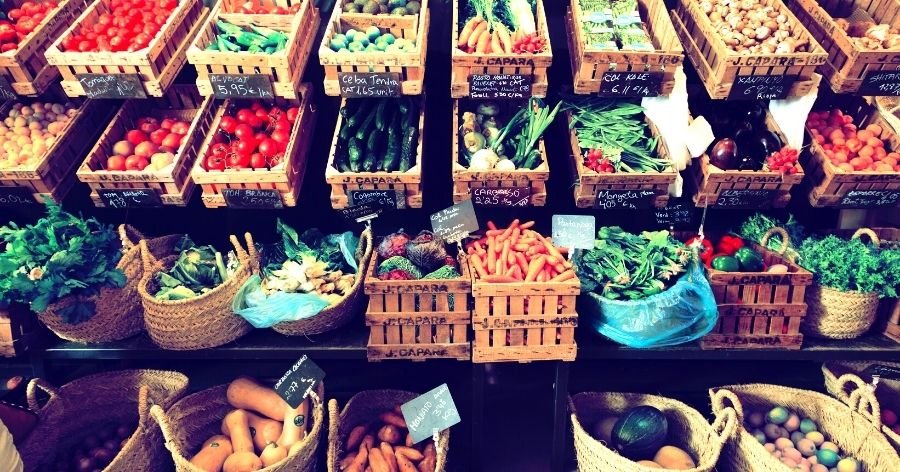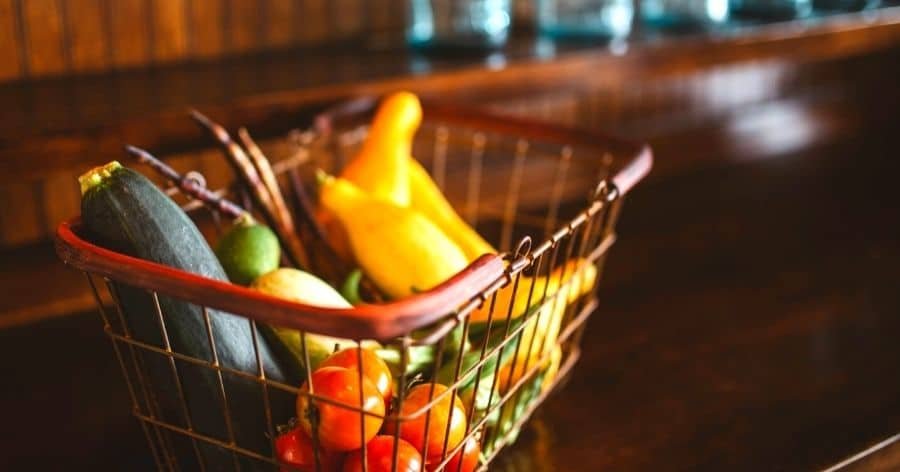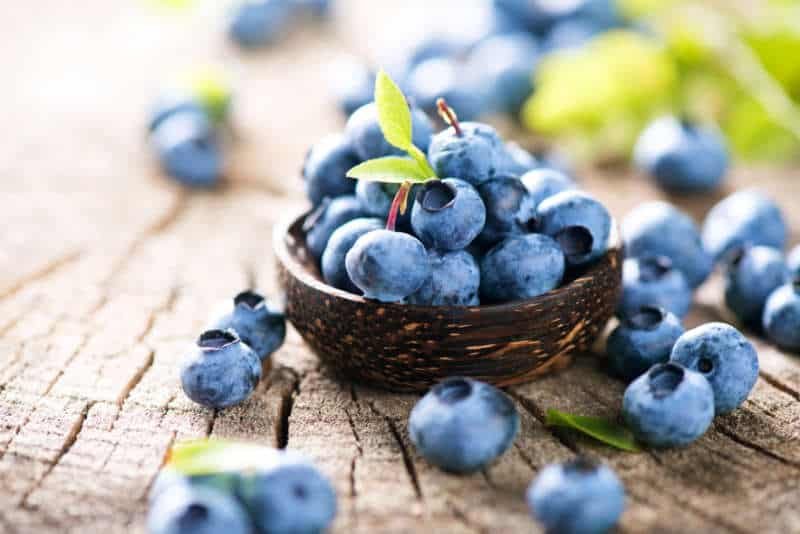The Ultimate Guide to a Whole Food Plant-Based Shopping List

As you transition to a plant-based lifestyle, your grocery list will change, too. A Whole Food Plant-Based shopping list serves a bigger purpose than just making your shopping quicker.
If you are on a plant-based journey, keeping your pantry well-stocked and planning your meals have to become your life mantra.
Your WFPB shopping list is vital for making sure you get adequate nutrition. A well-thought-out list can also motivate you to continue with a healthier lifestyle by keeping things interesting.
Supermarkets overstocked with refined items make shopping for Whole Food Plant-Based grocery more challenging and time-consuming. If you find yourself lost and confused at grocery stores, you can’t thank a Whole Food Plant-Based shopping list enough.
This article will cover the essentials to help you create a wholesome Whole Food Plant-Based shopping list for your next grocery shopping trip.
What can you eat on a Whole Food Plant-Based diet?
Before you start making a Whole Food Plant-Based shopping list, you need to know what to include and which food items to exclude from your WFPB diet.
Let’s go over it in detail based on the dietary recommendations of leading nutritionists.
Foods to Maximize
A Whole Food Plant-Based diet is all about the food produced from plants. Whole food refers to the food items that are not processed or, at the least, have undergone minimal processing.
A significant portion of your WFPB diet should include:
- Vegetables
- Fruits
- Whole grains
- Legumes and beans
- Nuts and seeds
Foods to Limit
Though plant-based, experts recommend limiting certain food items in your diet. These are:
- Refined grains
- Refined sugar
- Added vegetable oils
- Salt
- Alcohol
Foods to Eliminate
Eliminating food products is equally essential as adding whole food and plant-based items to your WFPB diet.
If you are on your way to a plant-based lifestyle, the food that won’t find a place in your Whole Food Plant-Based shopping list are:
- All kinds of meat
- Poultry and eggs
- Seafood
- Dairy products
- Animal fat

Where can you go shopping for Whole Food Plant-Based produce?
Finding the right destination to shop your plant-based grocery list is not too tricky whether you live in a city or outskirts.
Your nearest grocery stores and farmers’ markets can surprise you with the options they offer. Your main task will be to pick and choose.
The following places are great places to find Whole Food Plant-Based produce.
Local Farmers’ Market
Local farmers’ markets are a fresh fruit and vegetable heaven. You can rely on these markets to stock your kitchen with WFPB options.
Along with various fruits and vegetables, you can also find whole grains, legumes, and spices. Pretty much everything you need to cook nutritious meals.
Another good reason to shop at a local farmers’ market is lower prices than supermarkets or grocery stores. Plus, you get to support the farmers by directly buying from them.
And, if you are interested in learning in-depth about where your food comes from, you can get some first-hand information.
Supermarkets / Grocery Stores
Supermarkets and nearest grocery stores are the most convenient places for shopping for everyday essentials.
While you will find almost everything on a plant-based grocery list at a supermarket, your options may be limited at a small grocery store.
Most supermarkets and organic shops house a wide range of seasonal and exotic fruits and vegetables in their produce section. For whole grain products and other ingredients like spices, you can head to the respective sections.
If you’re lucky, you may even find a dedicated section for Whole Food Plant-Based products.
Another task you’ll have while shopping at a supermarket or grocery store is to check the level of processing for the packaged items.
Online Grocery Stores
Given the pandemic situation, online grocery stores are no less than a savior. Whatever you need, you can get it delivered to your doorstep in a few clicks.
Like supermarkets, you can expect a wide variety of Whole Food Plant-Based options at online grocery stores.
The only drawback of shopping grocery online is that you won’t be able to inspect the quality of products like shopping in person.

The complete Whole Food Plant-Based shopping list
A well-balanced plant-based diet is crucial to avoid deficiency of essential nutrients, such as protein, iron, vitamin B12, vitamin D, and calcium. Creating a plant-based grocery list should take nutrition into account. Let’s get into the details of what can go on your Whole Food Plant-Based shopping list. Use this list as a starting point. As you discover more plant-based food, your list may see many other items.Vegetables
Vegetables make up a significant portion of a Whole Food Plant-Based shopping list. From roots to flowers, plants have it all in different shapes, sizes, and colors to make a healthy meal. You can pick a generous mix from the following different vegetable types: Stems and Leaves- Arugula
- Asparagus
- Basil
- Beet greens
- Bok choy
- Brussels sprouts
- Cabbage
- Celery
- Cilantro
- Collard greens
- Endive
- Kale
- Kohlrabi
- Lettuce
- Microgreens
- Mustard greens
- Parsley
- Potatoes
- Rhubarb
- Seaweed
- Spinach
- Watercress
- Acorn squash
- Ash gourd
- Bitter gourd
- Bottle gourd
- Butternut squash
- Corn
- Cucumber
- Eggplant
- Okra
- Peppers
- Pumpkin
- Ridge gourd
- Tomatoes
- Zucchini
- Artichoke
- Broccoli
- Cauliflower
- Garlic
- Leeks
- Onion
- Arrowroot
- Beets
- Carrots
- Cassava
- Ginger
- Konjac
- Radishes
- Sweet potatoes
- Taro
- Turnips
- Yam
- Button mushroom
- Chanterelle
- Cremini
- Enoki
- Morel
- Oyster mushroom
- Porcini
- Portabello
- Shiitake
- Pick a good mix of different types and colors of vegetables to ensure you get balanced nutrients all through your meals.
- Go for seasonal produce as they tend to taste better and have a higher nutritional profile. The seasonal choice is also better for the environment.
- Avoid vegetables that may not be good for you as per your health condition.
- Avoid picking off-season produce as they may be high in pesticides.
Fruits
No matter which part of the world you live in, you’ll always find some delicious fruits in the market. Some common fruits to add to your list are:- Apple
- Apricot
- Avocado
- Banana
- Blackberries
- Blackcurrant
- Blueberries
- Cantaloupe
- Cherries
- Clementine
- Coconut
- Custard apple
- Dates
- Dragonfruit
- Figs
- Grapefruit
- Grapes
- Guava
- Jackfruit
- Kiwi
- Lemon
- Mango
- Melon
- Orange
- Papaya
- Passion fruit
- Peaches
- Pear
- Pineapple
- Plum
- Pomegranate
- Prunes
- Sapodilla
- Strawberries
- Watermelon
- Try going for locally produced and seasonal fruits.
- Pick the amounts of fruits judiciously, keeping the shelf life in mind.
- Avoid picking pre-cut fruits as their nutritional value tends to reduce. Also, they may get spoiled quickly due to microbial growth.
- Don’t forget to pick citrus fruits as your daily vitamin C requirements are higher than other nutrients.
Beans and Legumes
Leguminous food is an integral part of the human diet for its nutritional benefits. From fresh to dried legumes, you have many options to add to your WFPB shopping list.- Alfalfa
- Black gram
- Chickpeas
- Cowpeas
- Edamame
- Fava beans
- Kidney beans
- Lentils (yellow, black, pink)
- Lima
- Mung beans
- Red beans
- Runner beans
- Soybeans
- Go for different types of dried and fresh legumes for variation in your meals.
- If you’re buying loose dried legumes, take a good look at the quality. Check that there is no debris and insects so that you can store them for a longer duration.
- Avoid picking polished lentils. Polished ones are cleaned off all the husk to make it look shiny, which leads to nutrient loss.
Whole Grains
Grains constitute a significant portion of daily meals worldwide. One of the biggest threats to our health comes from the consumption of refined grains. Hence, whole grains should be at the top of your Whole Food Plant-Based shopping list.- Amaranth
- Barley
- Buckwheat
- Bulgur
- Cornmeal
- Farro
- Kamut
- Millet
- Multigrain bread
- Oats
- Quinoa
- Rice (brown, white, purple, jasmine, etc.)
- Rye
- Sorghum
- Spelt
- Teff
- Whole wheat pasta
- Try different types of grains to get the best of whole grains. Don’t just stick to rice or wheat.
- While picking bread or pasta, check the labels to ensure the ingredients are whole grains. Go for carbohydrates to fiber ratio less than 10:1.
- Avoid buying whole-grain products with added salt or sugars.
Nuts and seeds
Although it’s best to use seeds and nuts in small quantities, they’re an excellent addition to dishes for making them more nutrient-dense. Occasionally, you can use them as quick snacks such as granola bars. Some good options to include in your plant-based grocery list are:- Cashew
- Chia seeds
- Dried coconut
- Flax seeds
- Hazelnut
- Pecans
- Pinenut
- Pistachio
- Pumpkin seeds
- Sesame seeds
- Sunflower seeds
- Walnut
- Buy small quantities of seeds and nuts to prevent overconsumption.
- Don’t buy roasted nuts or seeds with oil.
- Avoid dry roasted products with added salt or sugar.
Herbs, Spices and Condiments
What is food without flavor? The plant kingdom has many herbs and spices to help you cook delicious meals. Not to mention, spices are healthy too. Adding some condiments to your grocery list for cooking is also a good idea. A few herbs, spices, and condiments you should go for:- Baking powder
- Basil
- Bay leaf
- Caraway
- Chili flakes
- Chili powder
- Cinnamon
- Clove
- Cumin
- Fennel
- Garlic powder
- Ginger powder
- Lemongrass
- Mixed herbs
- Mustard sauce
- Oregano
- Paprika
- Peppercorns / Pepper powder
- Rosemary
- Saffron
- Sage
- Star anise
- Soy sauce
- Thyme
- Turmeric
- Vinegar
- Pick dried herbs and powdered spices for prolonged storage.
- Skip oil-based spice products such as chili oil.
- Don’t go for sauces with added salts, sweeteners, or oils.
Dairy and Meat Alternatives
The hardest part of a plant-based lifestyle is to find alternatives for dairy and meat products. Here are some plant-based dairy and meat alternatives that you may easily find at the supermarket.- Almond butter
- Almond milk
- Coconut milk
- Peanut butter
- Soy milk
- Tempeh
- Tofu
- Check the labels to double-check the plant-based source and added ingredients.
- Avoid products that have added oil, sweeteners or salts.
Canned and Frozen Food
It can be challenging to keep up with the ingredients that perish fast or take longer to cook in our busy schedules. Some canned and frozen options are good to make it to your Whole Food Plant-Based shopping list in such a case.- Canned beans
- Chipotle
- Frozen baby corn
- Frozen berries
- Frozen peas
- Hummus
- Tomato puree
- Vegetable broth
- Freeze or preserve some food at home, such as seasonal fruits and vegetables.
- Avoid the products that have added sugar and salt.
Snacks
It is good to keep some snacks handy when you are too busy or feel hungry between meals. A few good vegan options for occasional munching you can add to your shopping list:- Baked plantain chips
- Dry roasted nuts
- Sun-dried fruit chips
- Unsweetened dark chocolate
- Whole grain crackers
- Go for dry-roasted or baked products only.
- Strictly avoid the products that are fried or have added sugar and salt.

Conclusion
A Whole Food Plant-Based shopping list is nothing short of a survival tool for your WFPB diet journey. It helps you navigate markets like a breeze and makes sure you don’t fall short on nutrition.
The key to an efficient plant-based grocery list is knowing your food and planning your meals. To begin with, you can make use of our complete list of WFPB groceries for your Whole Food Plant-Based shopping.
The crux of the list is to buy unprocessed, plant-based products and avoid anything that has added salt, sweeteners, or oils. As you do more plant-based shopping, you’ll find your list to be more precise and diverse.
Have a great time shopping plant-based!
Book Your Coaching Session
We offer plant-based coaching sessions for those who want to transition to a Whole Food Plant Based lifestyle, or to those who have already started but are facing challenges. The coaching sessions are aimed at offering motivational and practical advice such as cooking, shopping, family challenges, going out for dinner, overcoming psychological challenges, changing habits, and more. Note: No medical advice is given in the consults.

GET STARTED!
When you transition to a Whole Food Plant Based lifestyle, all sorts of challenges appear on the path. If you are serious about this, you may need to give up some of your favorite foods and flavors and try to replace them for new ones. You may feel limited at first, but you'll be surprised by the variety of new foods and flavors. To help you get started, we've put together a list of 5 simple food tips.
